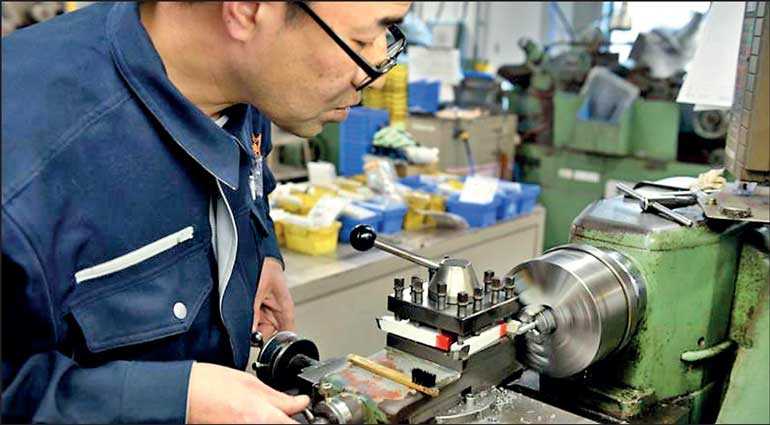Thursday Jan 08, 2026
Thursday Jan 08, 2026
Friday, 22 May 2020 00:18 - - {{hitsCtrl.values.hits}}

Over 30% of Japanese companies have their overseas affiliate production bases located in China (Ministry of Economy, Trade and Industry – Survey on Overseas Business Activities).
These companies were facing two major challenges due to gradual escalation of labour and  infrastructure costs in China and introduction of higher tariffs for the Chinese made products by US administration during 2019.
infrastructure costs in China and introduction of higher tariffs for the Chinese made products by US administration during 2019.
Japanese manufacturers have been seeking lower labour costs and supply-chain diversification by moving some output out of China during past few years as wages rose and infrastructure in countries like Vietnam and Bangladesh improved. Still, China was able to retain most of the Japanese companies to maintain most important production hub in China until US announced escalation of tariffs in 2019.
Impact of the United States tariff increase
To maintain their US market share and profitability top Japanese companies are orchestrating shifts in production away from China seeking to sidestep US tariffs. As of now some of the major Japanese affiliates have already decided to transfer their production out of China. Sony Corp., Ricoh Co., Asics Corp, Sharp Corp, Nintendo and Kyocera taking the lead. Nike and Adidas and Puma are also taking steps to move production out of China.
Uniqlo, Levi’s, Crocs, Calvin Klein and Tommy Hilfiger are some of the brands that have moved their orders, from manufacturing bases in China.
COVID-19 impact
With the emergence of COVID-19, with the disruption of supply chains between the major trading partners, Japanese Prime Minister announced a record economic stimulus package of $2.2 billion to help its manufacturers shift production out of China.
The Japanese Government’s panel on future investment recently agreed on the need for manufacturing of high-added value products to be shifted back to Japan, and for production of other goods to be diversified across South-East Asia.
Approximately $2 billion will be allocated to help companies move production back into Japan, and the remaining $200 million to help companies move production to other countries in South East Asia.
Therefore it is evident that a large number of remaining mid and small sized Japanese companies continuing in China may now want to move out production from China due to the following reasons:
Opportunity
This turn of events will open new opportunities to South Asian countries as well and this is an instance Sri Lanka too is in a position to invite Japanese FDIs to Sri Lanka. With well-known success stories of Noritake and Colombo Dockyard it is the time now to fast track the steps as other South Asian countries such as India and Bangladesh are already at the forefront. Even though majority of these companies moving out will look at India as an alternate production destination there are two distinct disadvantages that might come up when focusing on India.
a. Japanese manufacturers will not want to believe in a concept of another China in India.
b. End products are needed back in Japan to fill in the supply chain gaps in Japan rather than manufacturers looking for markets in India domestic market.
Therefore, as a part of a business development strategy we wish to investigate capabilities of interested Sri Lankan enterprises and to identify the ones that may be of interest to Japanese Companies whose affiliates are considering moving out from China.
It is our intention to identify Sri Lankan facilities that will fall within the following three broad categories:
1. Those who are currently in export trade with installed capacities, having room for expansion and are able to embrace new Japanese technology and Japanese standards in production
2. Companies established in manufacturing and supplying high quality products for the local market using local raw materials who wish to move onto the next generation of production aiming at larger markets such as India
3. Companies willing to accept Japanese know-how and are capable of producing products to Japanese market, raw material components to large volume of Japanese companies who will be returning to Japan
It is noteworthy to mention that many Japanese companies believe in training and development of skills that will fit into their production needs.
The following sectors are considered important:
Manufacturing: Food, semi-conductors, automotive electronic and harnessing items, ceramic products, steel products and metal products, motor spare parts, medical devices, personal protective equipment, elder care equipment (elders’ handing equipment, mobile toilets, etc.).
Non-manufacturing: Agriculture, fisheries, ICT and miscellaneous non-manufacturing industries.
[The writer is attached to Strategic Management Alliance (SMA). SMA is a business development consultancy successfully promoting trade and investments between Japan and Sri Lanka.]